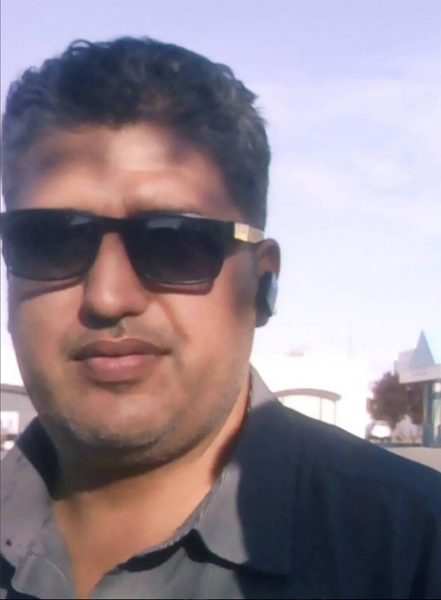Mosque victim texts wife after death? What next? Do we find out Jacinda lied to us?
We knew as soon as everyone said WE (Islamic State Watch) were responsible that this was set up.

Kamel Darwish died about 1.44pm on March 15, 2019, police say.
The 38-year-old father-of-three was killed instantly, it’s been believed, after being gunned down by the Australian terrorist inside Christchurch’s Al Noor Mosque.
But Darwish’s brother Zuhair, who arrived at the mosque just after the shooting, said his phone was answered several times, hours after police say he was dead.
Kamel’s wife even received a love heart emoji message some 21 minutes after police say he was killed. A phone call was made from the phone a minute earlier.
Darwish’s body was not recovered from the mosque until the next day – despite his distraught and frantic brother pleading with police that he could still have been alive.
He fears his brother could have lain injured but alive among the bodies for hours.
Now, Zuhair Darwish is calling on a coroner to examine the exact circumstances of his Jordan-born brother’s death – nearly three years on.
It came during the first day of a scope hearing presided over by Coroner Brigitte Windley into what a coronial inquiry into the March 15 attacks, which killed 51 Muslims, will look at.
The inquiry will aim to establish cause and circumstances of death, where possible, and consider any recommendations or comments that could help reduce the chances of further deaths in similar circumstances.
There has been no decision on whether a full inquest hearing will be held.
The Australian terrorist Brenton Tarrant, who was jailed for life without parole in August 2020, is dialling into the scope hearing from maximum-security at Auckland Prison but is not seen or heard from. He is being represented by Auckland defence lawyer Ron Mansfield QC who could make oral submissions on his behalf.
Questions so far have included whether the Australian terrorist was acting as a lone wolf or whether he had help and how he was able to get a firearms licence. There have also been calls to scrutinise allegations of “aggression” by first police officers on the bloody and chaotic Al Noor Mosque scene, and claims that officers pointed guns at victims.
This afternoon, lawyer Anne Toohey, who is representing a number of families, said Zuhair Darwish has serious questions over what has been a “very traumatic situation”, where he feels he was unable to help his brother when he may of in fact been alive.
He hopes the coroner will finally be able to bring some answers over just how – and when – his brother died.
Kamel Darwish’s cellphone was recovered later from the scene, with police saying it was found outside in the car park.
The device, damaged with a cracked screen, was examined by police experts. Zuhair has evidence of calls from his own phone records along with a screenshot of the message sent to Kamel’s wife overseas.
Zuhair says he phoned his brother several times after the attack and it was answered several times, but there was no noise except for static.
A police report acknowledges that a phone call was made to Kamel Darwish’s wife at 2.05pm – some 21 mins after they say he died.
There was also an outgoing call made from an app on his phone at 2.05pm – and at 2.06pm a love heart emoji was sent on the same app.
“Police have accepted that these two calls and this message were sent after they believe that Mr Kamel Darwish died,” Toohey said today.
“My client is shown to have called his brother’s phone 27 times between 1.45pm and 7.18pm.
“My client says that he could hear someone but they did not speak.”
Call data shows a call at 2.42pm which connected for nearly two minutes, another at 2.25pm of 24 seconds, and “numerous calls” at between two and 32 seconds.
“It’s inherently unlikely that a phone that has a damaged screen would self-initiate, sending a love heart emoji […] through an app and initiate a call through a different function on the phone,” Toohey said.
“There is an obvious issue, your honour, as to whether Mr Kamel Darwish was in fact alive in the mosque after the time that the police believe he was dead.
“This is highly relevant because he was left in the mosque until the following day.”
After the shooting, Zuhair Darwish was told to go to the hospital, believing his brother might be there.
He spoke to police between 20-30 times, telling them his brother’s phone was being answered, and saying, “I believe he’s alive, I can’t find him”.
Once the hospital lockdown lifted, he returned to the mosque and told police that his brother had been answering his phone and could still be alive.
He says he was put in the back of a police car and threatened with arrest if he did not calm down.
Toohey says, at this stage, they are not saying that Kamel Darwish would have survived his injuries if he was treated that day, but they simply don’t know.
The scope hearing continues tomorrow.
Police admit message and calls sent from victim’s phone after they say he died
